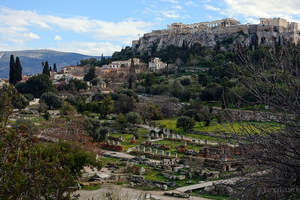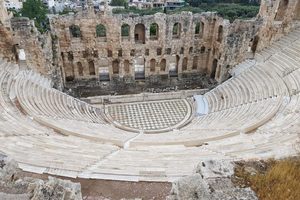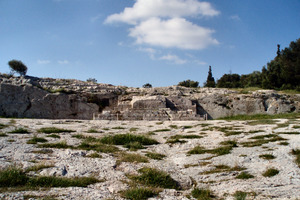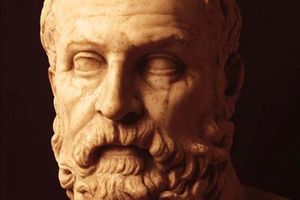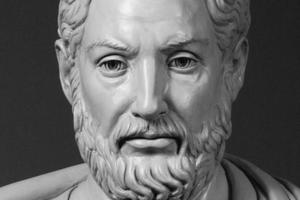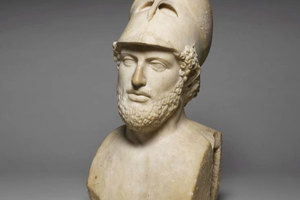Athenian Democracy
The political system of democratic Athens in the 5th century BCE
From approximately 594 to 321 BCE, a democratic form of government existed in the city-state of Athens. It is considered the world's first democratic system. Every citizen had the right (and even the obligation) to participate in the work of the People's Assembly. During the peak of Athenian democracy, it is noted that about one-third of the citizens held various government positions simultaneously. According to Dr. Karlin Romano, a jurisprudence doctor, the experience of Athenian democracy continues to attract more attention from scholars than modern implementations of democracy. The Guardian states that ancient Athenians would likely consider the British and American political systems oligarchic. In the late 20th century, a campaign celebrating 2,500 years of democracy took place in the Western world (from the reforms of Cleisthenes in 508/507 BCE). V.P. Buzesku emphasized the legal character of Athenian democracy, where the will of the people was limited by law. Ancient Greek democracy was a restricted democracy, granting political rights only to free citizens while excluding women and slaves, who constituted the absolute majority of the population. The slaves, metics (foreigners and freed slaves), and women did not possess civil rights and could not participate in the governance of the state. It is highly likely that the ratio of free citizens to slaves was 1:3, which means that no more than 15% of the population (excluding women, children, and metics) participated in the governance of the state. Starting from the middle of the 5th century BCE, a person could be considered a citizen of the Athenian polis if both of their parents were citizens of Athens, or citizenship could be obtained individually through lawful election at the People's Assembly. The period of political democracy coincided with the "apex" of the classical cultural heritage of antiquity in terms of time and geographical location.
Background
With the fall of royal power in the 9th-8th centuries BCE and the subsequent establishment of aristocratic and later oligarchic regimes, the Athenian people faced increasing oppression from the ruling elites. There was no political unity in Athenian society during this time. The aristocrats and wealthy individuals supported the existing regime, while the poor advocated for radical democracy, and the emerging middle class favored a blend of oligarchic and democratic elements. The division in society was accompanied by periodic popular uprisings and political instability. The laws of Draco, which were enacted during this period, did not resolve the situation as they hardly affected the political sphere and only solidified the already established moderate oligarchic regime. This led to further turmoil and increased polarization in society. The first steps towards improving the position of the demos (common people) were taken in the early 6th century BCE by Solon. He abolished debt slavery, prohibited the conversion of debtors into slaves, granted all classes access to the Ecclesia (People's Assembly) and courts, and divided Athenians into social classes based on their property status.
Establishment of the traditional institutions of Athenian democracy is associated with the name of Cleisthenes. He implemented territorial reforms. While under Solon, Athens was divided into four phylai (tribes) based on kinship, Cleisthenes reorganized the administrative and territorial structure, and the Athenian polis now consisted of ten phylai. Introducing the territorial unit of phylai, Cleisthenes divided Attica into 30 divisions called trittyes. The trittyes were distributed as follows: ten around the city and its surroundings, ten along the coastal strip, and ten in the inland regions of Attica, which, in turn, were divided into demes. Thus, each phyle had three trittyes, meaning that each phyle had a share in all regions. The demes, local civic communities, became the primary administrative units of Athens. Equally important for the development of democracy in Athens were the reforms of the City Council, namely the establishment of the Council of Five Hundred based on the new administrative and territorial divisions, and the introduction of ostracism or the "ostracism trial."
Themistocles is rightfully considered one of the "founding fathers" of Athenian democracy, a renowned political figure and military leader during the Greco-Persian Wars (c. 524 BCE – 459 BCE). It was his "naval program" at the beginning of the Greco-Persian Wars that played a significant role in the development of Athenian democracy. V.S. Sergeyev writes: "As the role of the fleet increased, the relative importance in the social life of Athens also rose for those directly associated with it—the Athenian sailors, who belonged to the least privileged citizens and were classified as the fourth, lowest census class (fetoi). These citizens constituted the majority in the Athenian People's Assembly, whose political significance noticeably increased under Themistocles." Thus, this program was not only military but also political in nature.
Pericles (494 BCE – 426 BCE) is one of the most prominent political figures of the ancient world. Under his leadership, the Athenian polis reached its peak in terms of cultural, economic, and political prosperity. It was during Pericles' time that the most democratic system among all previously existing ones was established.
Legislative Power
1. Ecclesia (Greek: ἐκκλησία) or the People's Assembly
Functions:
1) Election of public officials
2) Enactment of laws and resolutions
3) Citizens had the right of legislative initiative and the right to bring a "graphē paranomon" (suit against illegality)
4) Oversight of magistrates' activities
5) Decisions on matters of war and peace
6) Religious matters
7) Granting of civil rights to foreigners, freed slaves, and metics (resident foreigners)
The People's Assembly convened 40 times a year and could also be convened in cases of special necessity.
Location: Pnyx Hill, Dionysus Theatre, or Piraeus.
Participants: all male citizens who had reached the age of 20.
2. Boule (Greek: Βουλή) or the Council of Five Hundred. A representative body of democracy that worked on a permanent basis. Functions:
1) Military matters
2) Foreign policy
3) Organization of public works
4) Decision-making on state financing
5) Religious matters
The Council of Five Hundred convened every day except for holidays.
Location: Athenian agora.
Participants: 50 citizens were chosen by lot from each phyle (10 phylai). Representatives from each phyle took turns leading for 35-36 days each.
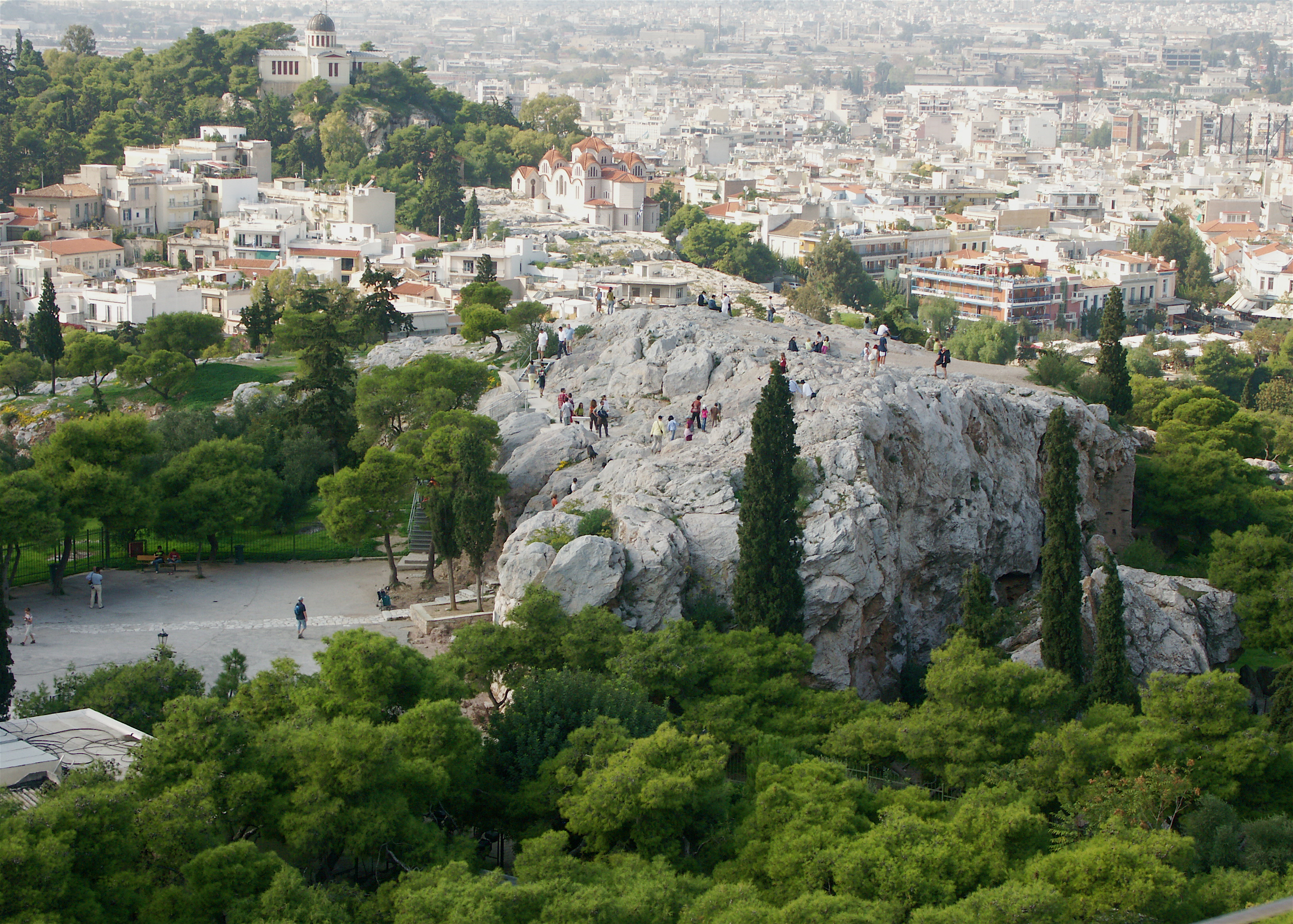 The Areopagus. the hill of Ares. Athens
The Areopagus. the hill of Ares. Athens
Executive power
1. Boards of Officials
Functions:
Each magistrate performed his duties in accordance with the collegium in which he served.
Functions:
Each magistrate carried out their duties in accordance with the collegium in which they served.
1) Collegium of 10 strategoi: commanded the army and navy, ensured security in peacetime.
2) Collegium of 10 agoranomoi: monitored the quality of goods in the market.
3) Collegium of 10 metronomoi: ensured compliance with the state standard of measures and weights.
4) Collegium of 10 port wardens: handled the supply of bread to the city.
5) Collegium of 10 sitophylaktes (later increased to 35): controlled the quality and prices of flour.
6) Collegium of 10 astynomoi: oversaw compliance with construction norms and cleanliness in the city.
Participants: Each collegium usually consisted of 10 citizens, not younger than 30 years old, selected by lot for a one-year term. Accountability and remuneration existed.
2. Collegium of 9 archons (Greek: ἄρχων, ἄρχοντος) Composition:
1) Eponymous archon (the year was named after them, the head of the executive power)
2) Basileus (in charge of cults, had priestly duties)
3) Polemarch (military commander)
4) 6 thesmothetai (handled judicial proceedings and their records)
Participants: All positions were elective. From the second half of the 5th century BCE, they were selected by lot.
3. Areopagus (Greek: Ἄρειος πάγος)
Functions:
1) Heard cases of murder
2) Conducted investigations
3) Decided religious matters.
From the second half of the 5th century BCE, the aforementioned functions were transferred to the People's Assembly and the Heliaea.
Judicial power
Heliaea (Greek: ἡλιαία) or Athenian People's Court
Functions:
1. Resolving legal disputes. Participants: All male citizens who had reached the age of 30. A total of 6,000 people. During a court session, the mandatory presence of 501 jurors. Prosecutors and defense lawyers did not exist; the plaintiff and defendant presented their arguments themselves. The jury rendered decisions through secret voting. Heliasts (Greek: heliastes) or jurors received 2-3 obols per day for participating in a judicial proceeding.
Location: Athenian agora.
